The procurement process can be a labyrinthine task for small businesses, often bogging down operations with complexities that distract from core objectives.
However, the Request for Quotation (RFQ) is a strategic tool that can streamline these processes, enhancing efficiency and cost-effectiveness. At Pecunio Solutions, we understand the intricacies of procurement and offer tailored solutions for startups, SMEs, and scale-ups within the SaaS and tech industries.
Our goal is to help these enterprises achieve strategic financial management, unlocking growth opportunities through streamlined procurement.
What is an RFQ?
A Request for Quotation (RFQ) is a document used by businesses to invite suppliers to bid on specific products or services. It is a crucial component in the procurement process, enabling companies to obtain pricing information and availability information from multiple vendors.
An RFQ typically includes a detailed list of the items or services required, including specifications, quantities, and delivery requirements.
This level of detail allows suppliers to provide accurate and comparable quotes, facilitating a competitive bidding process. For small businesses, effectively utilizing RFQs can lead to cost savings, better supplier relationships, and improved procurement efficiency.
Understanding RFQ and its Role in Procurement
An RFQ, or Request for Quotation, is a formal invitation to vendors, soliciting price quotes for defined products or services. Unlike an RFP (Request for Proposal) or RFI (Request for Information), which seek detailed proposals about solutions or need clarification on scalability or details, an RFQ focuses strictly on pricing.
This makes it a valuable tool in the procurement arsenal for businesses that have already identified what they need but need to find the most competitive pricing.
RFQ vs. RFP vs. RFI
While RFQs are price-centric, RFPs request comprehensive proposals that include strategy, ideas, and solutions alongside pricing.
RFIs are used earlier in the procurement process to gather information and understand potential solutions.
These three tools can be part of a broader strategy, but the RFQ is particularly effective in simplifying the procurement process by narrowing the focus to cost and availability.

The RFQ Process Explained
Implementing an effective RFQ process involves several key steps:
Identifying Business Needs and Defining Scope
Before issuing an RFQ, it’s critical to identify the specific business needs that necessitate procurement. This preparation phase involves defining the scope of the project and the specific products or services required.
Clear specifications ensure that potential suppliers understand precisely what is needed, increasing the likelihood of receiving accurate and relevant quotes.
Sourcing Potential Suppliers
The next step is sourcing potential suppliers. This involves researching vendors who meet the qualifying criteria and have the capability to deliver the products or services at the desired quality and quantity. Public announcements and industry networks can be leveraged to identify qualified contractors.
Preparing and Issuing the RFQ Document
A well-prepared RFQ document clearly outlines the requirements, submission deadline, and evaluation criteria.
This document serves as the foundation for obtaining pricing information and sets the stage for the entire process. Transparency and clarity in this document are crucial to avoid misunderstandings and ensure competitive bids.
Submission and Evaluation Phase
Once RFQs are issued, the submission phase begins. It’s essential to establish a fair and efficient evaluation process to review the bids. This involves comparing the quotes based on predefined criteria, such as the lowest price, delivery times, and vendor reputation.
Awarding Phase and Finalizing the Contract
After evaluating the responses, the procurement team enters the awarding phase, where they select the vendor offering the best possible price and terms.
The final step involves finalizing the contract terms and ensuring alignment between both parties. A binding contract is formed, and the procurement process transitions into the execution phase.
The RFQ Process in Comparison to the RFP Process
Understanding the distinctions between the RFQ and RFP processes is crucial for businesses aiming to optimize their procurement strategy. While both methods serve to identify and select suppliers, they cater to different needs and stages in the procurement lifecycle.
RFQ Process
The RFQ process is designed for procurement scenarios where the business requirements are straightforward, and the primary focus is on obtaining competitive pricing. This method is highly effective for acquiring standardized goods or services where specifications are clear, and the market offers ample supply options.
The RFQ process emphasizes:
Detail and Precision: Ensuring product or service specifications are thoroughly detailed to solicit precise quotations from suppliers.
Strict Pricing Focus: Vendors submit bids based on payment terms, facilitating a straightforward comparison of offers.
Speed and Efficiency: The RFQ process is generally faster, as it leverages existing vendor knowledge and concentrates on cost efficiency.
RFP Process
Conversely, the RFP process is utilized when a business seeks creative solutions or services that involve more complexity and customization. RFPs are common in projects requiring strategic planning, innovation, and detailed understanding from the supplier. Key elements of the RFP process include:
Comprehensive Proposals: Unlike RFQs, RFPs request detailed proposals that go beyond pricing, incorporating strategic solutions, methodologies, and timelines.
Evaluation Beyond Price: The evaluation of RFPs involves assessing vendors on several criteria, such as approach, capability, experience, and cost.
Flexibility and Collaboration: RFPs encourage vendors to demonstrate their expertise and propose innovative solutions, allowing for collaboration on complex projects.
Choosing the Right Approach
Selecting between the RFQ and RFP processes depends largely on the project’s complexity and the clarity of business needs. For businesses seeking to procure well-defined products or services at competitive prices, the RFQ process is highly suitable.
In contrast, the RFP process is preferable when looking for comprehensive solutions that require vendor innovation and strategic insights. Understanding these distinctions allows procurement teams to use each process effectively, ensuring alignment with organizational goals and maximizing value in the procurement process.
Benefits of Using RFQ for Small Businesses
For small businesses, RFQs offer several advantages:
Cost Savings and Efficiency Gains
By focusing on price, RFQs reduce the time and resources spent on procurement. This process ensures businesses obtain competitive pricing without the need for lengthy negotiations, leading to significant cost savings and efficiency gains.
Ensuring Consistent Supply and Quality
Engaging with qualified contractors through an RFQ process ensures a consistent supply of goods and services. By vetting suppliers upfront, businesses can maintain quality standards while minimizing the risk of supply chain disruptions.
Simplifying Complex Projects
For complex projects requiring specific products, RFQs provide a comprehensive price quote, simplifying the procurement process. This allows businesses to manage projects more effectively and reduces the complexity involved in sourcing and contracting.
Best Practices for Effective RFQ Management
To maximize the benefits of RFQs, small businesses should adhere to these best practices:
Clear Communication and Setting Reasonable Deadlines
Effective communication with suppliers is crucial throughout the RFQ process. Establishing clear communication channels and setting reasonable deadlines ensures that all parties are aligned and can meet expectations.
Strategies for Evaluating RFQ Responses
Developing a structured evaluation process helps businesses choose the most suitable vendor. This involves analyzing each quote against the predefined criteria and considering factors beyond just cost, such as vendor reliability and delivery capabilities.

The Selection Process for a Request for Quote (RFQ)
The selection process in an RFQ requires careful attention to detail and strategic decision-making to ensure that the best possible vendor is chosen. Here’s an overview of the key steps involved:
Gather and Organize Responses: Once the RFQ is issued and responses are received, it’s crucial to organize the quotations efficiently. This involves sorting responses based on the specific criteria laid out in the RFQ, such as price, delivery schedule, and compliance with technical specifications.
Evaluate Responses Objectively: A structured evaluation process is critical. Each response should be assessed against a predefined set of criteria. This typically involves creating a scorecard that considers factors such as cost-effectiveness, supplier reliability, quality assurances, and adherence to delivery timelines.
Shortlist Vendors: Based on the evaluation, compile a shortlist of suppliers who most closely meet the requirements and offer the best overall value. This selection should include vendors who have proven their capacity to not only meet the current needs but also provide scalability options for future projects.
Conduct Clarification Rounds: If necessary, conduct clarification meetings or rounds with the shortlisted vendors to resolve any ambiguities in their proposals. This step is essential for ensuring that all parties have a mutual understanding of the project requirements and expectations.
Negotiate Terms: Once a preferred vendor is identified, initiate negotiations to refine the terms of the offer. This stage is crucial for establishing favorable terms regarding pricing, delivery, warranties, and other contractual obligations.
Finalize Vendor Selection: After successful negotiations, finalize the selection of the vendor and draft the contract based on agreed terms. Communicate the decision effectively to all stakeholders involved in the procurement process to facilitate a smooth transition to the execution phase.
By following these steps carefully, businesses can effectively navigate the RFQ selection process, securing vendors that align with their objectives and ensuring optimal procurement outcomes.
How CFO Services from a Fractional CFO Help with an RFQ
Fractional CFO services can play a pivotal role in the RFQ process by providing financial expertise and strategic insights that enhance procurement decisions. A fractional CFO brings an objective, high-level perspective to the financial aspects of RFQ management, helping businesses identify cost-saving opportunities and optimize their procurement strategy.
They ensure that the financial criteria in RFQs are robustly structured to evaluate vendor proposals effectively, prioritizing not just cost but also long-term financial benefits. Additionally, a fractional CFO can assist in aligning the RFQ process with the broader financial strategy of the organization, ensuring that procurement activities support overall business goals.
By facilitating financial analysis and forecasting, fractional CFOs empower businesses to make informed decisions and secure partnerships with vendors that offer the best value and sustainability. This support helps streamline the RFQ process, minimizing financial risks and maximizing return on investment.

Taking Your Procurement to the Next Level
The RFQ process is a powerful tool for small businesses seeking to enhance their procurement strategies. By focusing on cost, quality, and efficiency, RFQs simplify complex projects and pave the way for growth. At Pecunio Solutions, we specialize in strategic financial management and can help your business optimize procurement processes.
Explore our free strategy session to discover how we can support your company’s procurement and financial goals. Partner with us to unlock growth opportunities and drive your business forward.
Resources for Enhancing Procurement and RFQ Processes
To further optimize your procurement strategies and refine your approach to Request For Quotes (RFQ), consider exploring the following resources:
CIPS (Chartered Institute of Procurement & Supply): Visit CIPS for a comprehensive collection of procurement best practices, guidelines, and industry insights.
Procurement Tactics: Explore Procurement Tactics to gain access to expert advice, negotiation strategies, and market intelligence tailored to procurement professionals.
Supply Chain Management Review: Read SCMR for in-depth articles and analysis on the latest trends and innovations in supply chain management and procurement.
Procurement Leaders: Visit Procurement Leaders for access to exclusive research, events, and tools that empower procurement professionals to drive innovation and competitive advantage in their organizations.
World Commerce & Contracting: Explore WorldCC to delve into resources and networks aimed at improving standards and understanding in the fields of commerce and contract management.
International Federation of Purchasing and Supply Management (IFPSM): Learn about IFPSM to connect with a global federation dedicated to enhancing professional standards and promoting the growth of the procurement field.
Spend Matters: Read Spend Matters for insights and analysis on procurement technology, supply chain innovation, and key trends influencing the procurement industry.
These resources provide further opportunities to expand your knowledge, refine strategies, and enhance the overall effectiveness of your procurement and RFQ processes.

